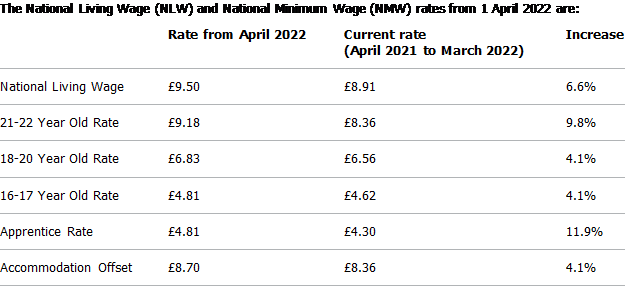With a significant Supreme Court judgement set to reform how part time workers’ holidays are calculated – and a Government consultation on this currently underway – employers must ensure they are on top of this fast-changing situation.
Here, we look at the current situation and how Employers should review their current policies and procedures ahead of any further changes.
Part-time workers are set to see changes in their holiday entitlement, which employers must ensure they are aware of to stay on top of their legal obligations.
Following a recent judgement from the Supreme Court, a consultation over holiday entitlement for part-year and irregular hours workers is being launched.
The Harpur Trust v Brazel case concerned the calculation of holiday pay and entitlement of a permanent part-year worker on a zero-hours contract. The judgment held that the correct interpretation of the Working Time Regulations 1998 is that holiday entitlement for part-year workers should not be pro-rated so that it is proportionate to the amount of work that they actually perform each year.
Part-year workers are entitled to 5.6 weeks of statutory annual leave, calculated using a holiday entitlement reference period to determine their average weekly pay, ignoring any weeks in which they did not work.
As a result of this judgment, they are now entitled to a larger holiday entitlement than part-time workers who work the same total number of hours across the year.
Employers are urged to take part in the Government consultation, ahead of a probable overhaul of their part-time worker holiday policy – but here, we look at the current situation and how to ensure you are compliant in meeting your obligations.
Current entitlement
Under the Working Time Regulations 1998 (WTR), all workers (this includes employees) are entitled to 5.6 weeks’ annual leave. For someone who works five days a week, this is 28 days. 28 days is the maximum statutory annual leave that must be given. Complications have arisen over the years in calculating this for those who work for less than five days a week, or less than 52 weeks in a year.
For part-time workers, working 52 weeks a year but less than five days, the solution is simple: their weekly days or hours worked are multiplied by 5.6 to get their yearly entitlement. For those who are not required to work for 52 weeks in the year, but are permanently employed (i.e., not on a fixed term contract), things are less clear. In the Harpur Trust v Brazel judgment, the Supreme Court ruled that part-year workers must be given 5.6 weeks annual leave, but this cannot be prorated in accordance with the number of weeks they work in a year – consultation is now underway by the Department of Business, Energy and Industrial Strategy (BEIS).
Pro-rated holidays
A part-year worker is anyone who doesn’t work every week of the year, such as someone on a term-time only contract. A part-time worker is anyone who works every week of the year but on fewer days or hours than a full-time colleague. A part-time pattern might mean they work three days per week instead of five, or 4 hours per day instead of 8, but they work 52 weeks per year.
It is important to understand the difference between a part-year worker and a part time worker as the holiday calculation is different for each. Annual leave can be pro-rated for a part-time worker. This is anyone who works 52 weeks per year but on less days/hours than a full-time colleague. For example, someone who works three days per week instead of five. This person would be entitled to 16.8 days’ annual leave instead of 28 days (5.6 x 3 = 16.8 days). Annual leave can also be pro-rated for fixed-term contracts, where there is a clearly agreed date for when the employment will end.
For example, if an employee is contracted to work for three months only to cover a busy period (e.g., summer holidays), their holiday entitlement will be 1.4 weeks. This is worked out by dividing 5.6 by 12 months then multiplying by three months (5.6/12 x 3 = 1.4wks). Finally, annual leave can be pro-rated for new starters and for leavers (e.g., someone who starts and/or leaves during an annual leave year), so that the entitlement is only based on full months worked under the contract. However, the Supreme Court judgement was clear that the amount of leave for part-year workers under a permanent contract must not be pro-rated to be proportional to that of a full-time worker. Therefore, zero-hours, variable hours, casual, agency and term-time staff should all get 5.6 weeks’ leave per year. What will the current Government consultation reveal?
Calculating leave entitlement and holiday pay
All employees are entitled to 5.6 weeks paid annual leave. As such, there should be no need to do any further calculations to work out accrual or entitlement (unless for part-time or fixed-term staff). The percentage method (where 12.07 per cent of the hours worked / pay received is used to determine holiday entitlement and pay) should not be used for any holiday calculations.
You must have measures in place to keep track of what entitlement has been used so far in the holiday year (in the same way you might do for full-year staff) and ensure everyone takes their full 5.6 weeks’ leave. Holiday pay should be paid at the normal rate of pay. Where weekly pay varies (for example, for workers on a zero-hours contract), you should calculate holiday pay based on an employee’s average weekly earnings over the previous 52 paid weeks. The reference period must only be weeks for which the worker was actually paid.
It must not include weeks where they were not paid as they did not work. It should also not include any weeks where “normal” pay was not received, for example, because they were on sick leave and they received sick pay.
You can go back for a maximum of two years (104 weeks) to obtain the relevant 52 weeks’ pay data.
In the event that the employer does not have 52 weeks data from the previous 104 weeks, then the reference period becomes the number of weeks’ worth of data available.
Example calculation – Average weekly pay
Add earnings from previous 52 working weeks / 52 = average weekly pay Pay for holiday period = average weekly pay x no. weeks’ holiday For example, if an employee’s average weekly pay is £100 and they want to take 2 weeks’ holiday: £100 x 2 = £200 holiday pay. This calculation should be re-done at the beginning of every holiday period.
Rolled up holiday pay
Government guidance states that holiday pay should be given at the time when annual leave is taken and that an employer cannot include an amount for holiday pay in the hourly rate. It also states that if a current contract still includes rolled-up pay, it has to be re-negotiated. In the past, employers could try to use rolled up holiday pay by being transparent with employees and ensuring they are given time off. But, employees could still raise a claim if they think they had been prevented from taking their annual leave.
However, since rolled up holiday pay typically uses the 12.07 per cent method to calculate accrual, the Supreme Court’s judgment that this should not be used adds extra risk. As such, it is best to reach alternative agreements with affected staff and ensure they are given 5.6 weeks’ annual leave with the pay for this leave given at the time the holiday is taken.
Holiday calculations – resolving errors and new approaches
Payment in lieu
Payment in lieu of statutory minimum entitlement (5.6 weeks) is not allowed unless employment is terminated. You must let employees take the full 5.6 weeks leave within the current holiday year and pay for leave at the time it is taken.
Backpay for previous years
If you have been calculating pay incorrectly (e.g., by using the 12.07 per cent method rather than taking a 52-week average), it is possible that you may owe employees compensation for underpayment of holiday pay. You can proactively take steps to provide the employee with backpay. Some employers may try to take the “wait and see approach” and let employees raise this, but this might not be possible for unionised environments since the union will likely be in contact to campaign on behalf of the employees they represent to get backdated pay. It is important to remember that not taking action could significantly increase the risk of unlawful deduction from wages claims being raised by employees.
When calculating what backpay is due, you will need to assess what was paid using the 12.07 per cent method and what should have been paid by taking a 52-week average; the compensation for underpayment of holiday pay will be the difference between these two figures. Where an employee or union request that backpay is given for previously underpaid holiday, it is likely you will have to do so, otherwise you are at significant risk of receiving an unlawful deduction from wages claim. Usually, an unlawful deductions claim must be paid within three months of the last deduction, or in this case, within three months of the last holiday pay payment.
But, given the scope of the situation, tribunals might allow employees to bring a claim within three months of the end of the holiday year in which holiday pay was calculated incorrectly.
The tribunals claims backlog is significant at present. Additionally, there are the risks of disrupting employee relations, thus reducing productivity, engagement and satisfaction, as well as action from trade unions.
Consequences of failing to give sufficient holiday
Not providing the full 5.6 weeks entitlement will be in breach of the law and is not recommended.
In this situation, there is a significant risk of tribunal claims, industrial action, employee grievances and resignations. There could also be wider implications for the organisation’s reputation with the general public.
Alternatives to part-year contracts
Term-time, variable-hours and zero-hours contracts, like any other type of contract, have their pros and cons. It is useful to consider why you are introducing a part-year contract in the first place. Is it because you only need someone to cover busy periods, like summer or Christmas, or term time? If so, a fixed-term contract or annualised contract may be a more effective alternative. If you want to continue having staff available year-round, and only call on them as and when needed, zero-hours and variable-hours agreements may be beneficial but consider all the terms involved. As such, it is worth understanding each of the different types of contracts and considering which is most appropriate for your workers.
If you would like to discuss this subject further, please contact Cecily Lalloo at Embrace HR Limited.
T: 01296 761288 or contact us here. If you would like to receive our newsletter, please sign up here.
Based in Aylesbury, Buckinghamshire, Embrace HR Limited provide a specialised HR service to the care sector, and small businesses, from recruitment through to exit.










